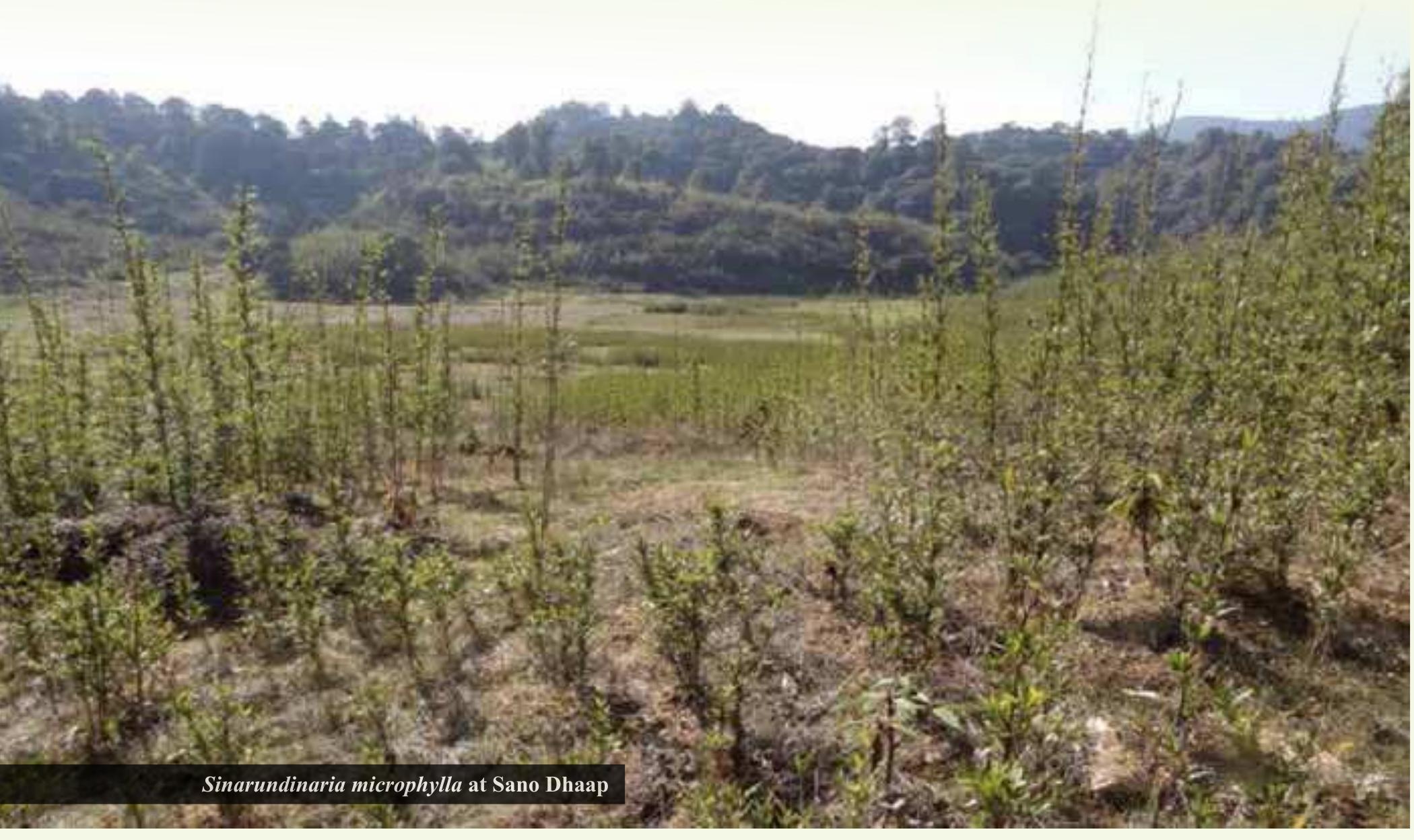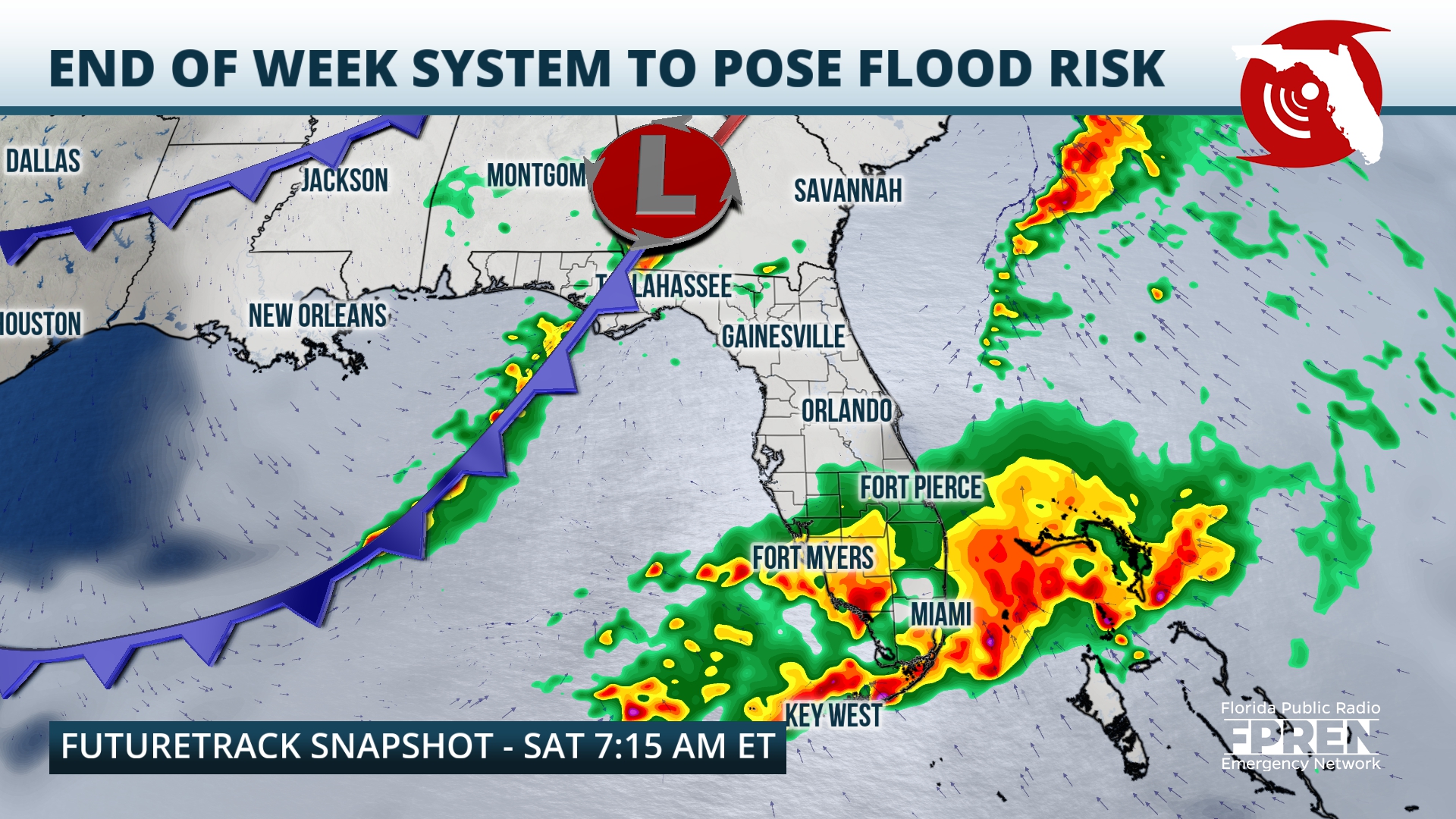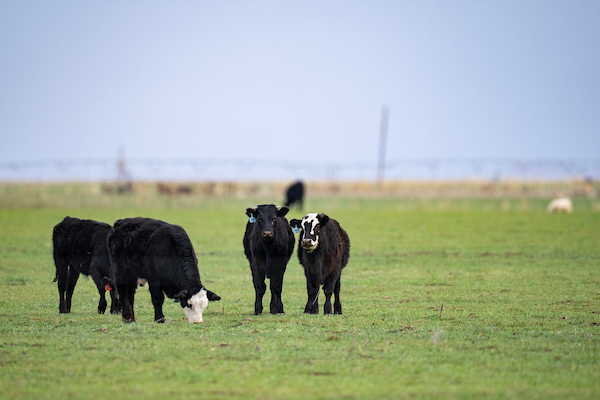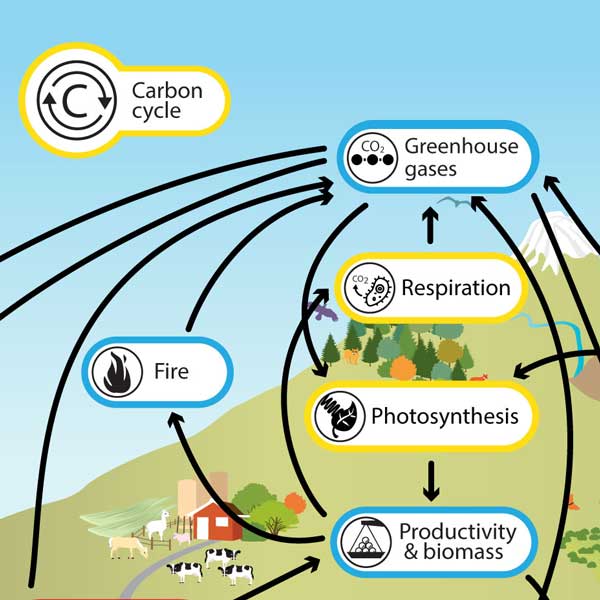Conservation Planning for Rare Michelia Species in China: A Report on Aligning with Sustainable Development Goals
Executive Summary
This report details a study on the conservation of rare Michelia species in China, addressing threats from habitat degradation and climate change. Utilizing ecological niche modeling (MaxEnt) and systematic conservation planning (Marxan), the study predicts future distribution shifts and identifies priority conservation zones. The findings directly inform strategies for achieving Sustainable Development Goal 15 (Life on Land) and SDG 13 (Climate Action). Results indicate that while southern Yunnan Province is a current biodiversity hotspot for these species, future climate scenarios predict significant habitat shrinkage and a northward and upward altitudinal migration of over 150 km. Priority conservation zones, constituting 0.86% of China’s land area, have been identified. A critical conservation gap exists, as 79.8% of these irreplaceable habitats (6.6 × 10⁴ km²) are currently outside designated nature reserves or parks. The report recommends expanding the conservation network within these priority zones to protect vital biodiversity and support the principle of sustainable ecological development.
1.0 Introduction: Aligning Conservation with Sustainable Development Goals
The global decline in biodiversity, exacerbated by climate change, poses a significant threat to ecosystem stability and the achievement of the Sustainable Development Goals (SDGs). This report focuses on the rare Michelia genus, an ancient and evolutionarily important plant group whose populations are increasingly fragmented and threatened due to human activity. The conservation of these species is a direct contribution to several SDGs:
- SDG 15 (Life on Land): The primary goal is to halt biodiversity loss by protecting threatened species and their habitats. This study provides a scientific basis for targeted conservation actions to safeguard the rare Michelia, many of which are classified as having extremely small populations.
- SDG 13 (Climate Action): By modeling the impacts of future climate scenarios on species distribution, this research provides critical data for developing climate-resilient conservation strategies to mitigate the effects of global warming on vulnerable ecosystems.
This study integrates advanced ecological modeling to translate scientific predictions into actionable conservation plans, addressing the urgent need to protect irreplaceable genetic resources from the dual pressures of human activity and a changing climate.
2.0 Methodology for Integrated Conservation Planning
A dual-model approach was employed to ensure a robust and actionable conservation strategy, integrating ecological suitability with socioeconomic constraints to support sustainable development.
2.1 Ecological Niche Modeling (MaxEnt)
The MaxEnt model was used to predict the potential distribution of 28 rare Michelia species based on their relationship with environmental variables.
- Data Collection: 2,088 validated species occurrence records were compiled from national and global databases, including the Chinese Field Herbarium (CFH) and the Global Biodiversity Information Facility (GBIF).
- Environmental Variables: 11 key ecological factors were selected after screening for correlation, including climate (e.g., minimum temperature of the coldest month, annual precipitation), soil, and topographic data, to model habitat suitability.
- Model Optimization: The model was optimized using the R ‘kuenm’ package to enhance predictive accuracy for both baseline (1970–2000) and future (2061–2080) climate scenarios, ensuring superior reliability over default parameters.
2.2 Systematic Conservation Planning (Marxan)
The Marxan model was utilized to identify cost-effective priority conservation zones that meet biodiversity targets while minimizing socioeconomic conflict.
- Conservation Targets: The high-suitability habitats identified by the MaxEnt model served as the primary conservation targets.
- Cost Layer (Human Interference Factor): To align with SDG 11 (Sustainable Cities and Communities), a Human Interference Factor (HIF) was developed as a proxy for conservation cost. This integrated data on:
- Land use
- Population density
- Gross Domestic Product (GDP)
- Nighttime lights
- Road density
- Human activity intensity
- Analysis: The model identified irreplaceable planning units (irreplaceability score of 80-100) to delineate priority conservation zones, balancing biodiversity goals with socioeconomic costs. This data-driven approach helps mitigate human-ecological conflicts.
3.0 Key Findings and Implications for SDGs
3.1 SDG 15: Life on Land – Habitat Distribution and Threats
The study provides critical insights into the status of rare Michelia habitats, directly informing actions for SDG Target 15.5 (take urgent and significant action to reduce the degradation of natural habitats, halt the loss of biodiversity and, by 2020, protect and prevent the extinction of threatened species).
- Current Richness Hotspot: The highest concentration of rare Michelia species is currently found in southern Yunnan Province.
- Habitat Contraction: Under future climate scenarios, the total area of high-richness zones is projected to shrink significantly, from a baseline of 0.82 × 10⁴ km² to as low as 0.62 × 10⁴ km².
- Key Environmental Drivers: The spatial distribution of species richness is most strongly influenced by the minimum temperature of the coldest month (q-value = 0.8205), annual precipitation (q-value = 0.7432), and precipitation of the warmest quarter (q-value = 0.7424).
3.2 SDG 13: Climate Action – Projected Habitat Shifts
The findings highlight the profound impact of climate change on species survival, underscoring the need for climate-adaptive conservation as mandated by SDG 13 (take urgent action to combat climate change and its impacts).
- Migration Patterns: The majority of rare Michelia species are projected to migrate towards northern high latitudes and higher altitudes to track suitable climatic conditions.
- Migration Distance: As climate change intensifies (under the SSP585 scenario), this migration is expected to exceed 150 km for at least 12 species, posing a significant challenge to their long-term survival due to dispersal limitations.
3.3 Identifying Priority Conservation Zones and Gaps
The analysis identifies specific, irreplaceable areas for conservation, providing a roadmap for efficient resource allocation to meet SDG 15 targets.
- Priority Conservation Zones Identified: A network of priority zones covering 8.27 × 10⁴ km² (0.86% of China’s land area) was identified. These are primarily located in:
- Southeastern Tibet Autonomous Region
- South-central Yunnan Province
- Central Sichuan Province and western Chongqing Municipality
- Southern Guizhou Province and northern Guangxi Zhuang Autonomous Region
- Southern Hunan Province, northern Guangdong Province, and Jiangxi Province
- Northwestern Fujian Province, southern Zhejiang Province, central Taiwan Province, and southwestern Hainan Province
- Critical Conservation Gap: An overlay analysis revealed that 6.6 × 10⁴ km², or 79.8% of the identified priority conservation zones, are not currently protected by China’s existing network of nature reserves and parks. This represents a major gap in national efforts to achieve SDG 15.
4.0 Conclusion and Recommendations for Sustainable Action
This study confirms that rare Michelia species face imminent threats from climate change and habitat degradation. The projected habitat shifts and the identification of a significant conservation gap demand urgent and targeted action to align with China’s ecological goals and the global SDGs.
4.1 Recommendations
To effectively protect these species and contribute to SDG 13 and SDG 15, the following actions are recommended:
- Expand the Protected Area Network: Prioritize the establishment of new nature reserves and parks or the expansion of existing ones to cover the 6.6 × 10⁴ km² of unprotected, irreplaceable habitats identified in this report.
- Implement Climate-Adaptive Management: Develop conservation strategies that account for the projected migration of species. This includes establishing ecological corridors to facilitate movement between current and future suitable habitats.
- Strengthen Habitat Conservation: Enhance in-situ conservation measures within the identified priority zones to mitigate human impacts and maintain ecosystem integrity, thereby supporting the principle that “green mountains are golden mountains.”
- Continue Dynamic Monitoring: Implement long-term monitoring programs for rare Michelia populations and their habitats to track changes and adapt management strategies accordingly, ensuring the long-term sustainability of conservation efforts.
Analysis of Sustainable Development Goals in the Article
1. Which SDGs are addressed or connected to the issues highlighted in the article?
The article primarily addresses two Sustainable Development Goals (SDGs) based on its focus on biodiversity conservation, habitat degradation, and the impacts of climate change.
-
SDG 15: Life on Land
This is the most relevant SDG. The article is centered on the conservation of terrestrial ecosystems and biodiversity. It specifically deals with protecting a rare plant species (Michelia) from extinction, halting biodiversity loss, and managing forests sustainably. The study’s core purpose is to “predict the distribution and conservation of rare Michelia species” which are at “risk of extinction due to habitat degradation caused by human activity and global warming.” This directly aligns with the goal of protecting, restoring, and promoting the sustainable use of terrestrial ecosystems.
-
SDG 13: Climate Action
This SDG is also central to the article, as climate change is identified as a primary threat to the rare Michelia species. The study uses “future climate scenarios” to predict how habitats will shrink and migrate. It states that “global warming is disrupting ecosystems” and that species migration due to climate change “will exceed 150 km.” By modeling these impacts and proposing adaptive conservation strategies, the article directly addresses the need to take urgent action to combat climate change and its impacts.
2. What specific targets under those SDGs can be identified based on the article’s content?
Several specific targets under SDG 13 and SDG 15 are identifiable from the article’s research objectives and findings.
-
Targets under SDG 15 (Life on Land)
-
Target 15.5: Take urgent and significant action to reduce the degradation of natural habitats, halt the loss of biodiversity and, by 2020, protect and prevent the extinction of threatened species.
The article directly addresses this target by focusing on 28 “rare Michelia species” identified from sources like the “China Biodiversity Red List” and the “Threatened Species List of China’s Higher Plants.” The entire study is an urgent action to “prevent the extinction of threatened species” by identifying priority conservation zones.
-
Target 15.2: By 2020, promote the implementation of sustainable management of all types of forests, halt deforestation, restore degraded forests and substantially increase afforestation and reforestation globally.
The study’s recommendation to “expand conservation zones for rare Michelia species within designated priority zones and enhancing habitat conservation measures” is a direct call for the sustainable management of the forests where these species live.
-
Target 15.9: By 2020, integrate ecosystem and biodiversity values into national and local planning, development processes, poverty reduction strategies and accounts.
The article’s methodology, which uses systematic conservation planning (Marxan) to “identify priority conservation zones,” is a clear example of integrating biodiversity values into national and local planning. The mention of the principle that ‘green mountains are golden mountains’ further connects conservation efforts to national development philosophies.
-
Target 15.1: By 2020, ensure the conservation, restoration and sustainable use of terrestrial and inland freshwater ecosystems and their services, in particular forests, wetlands, mountains and drylands, in line with obligations under international agreements.
The research aims to ensure the conservation of forest ecosystems that are critical for the survival of rare Michelia species. By identifying “priority conservation zones” covering “8.27 × 104 km2,” the study provides a blueprint for conserving these important terrestrial ecosystems.
-
-
Targets under SDG 13 (Climate Action)
-
Target 13.1: Strengthen resilience and adaptive capacity to climate-related hazards and natural disasters in all countries.
The study strengthens adaptive capacity by predicting how climate change will affect species distribution. It finds that “Northern high latitudes and higher altitudes are expected to offer better habitats” and that migration will occur, allowing for proactive conservation planning to build resilience against climate-related habitat loss.
-
Target 13.2: Integrate climate change measures into national policies, strategies and planning.
The research provides a direct tool for this integration. By modeling habitat suitability under “future (2061–2080) climate scenarios” (SSP126 and SSP585), it offers a scientific basis for integrating climate change adaptation into China’s national biodiversity conservation strategies and planning for protected areas.
-
3. Are there any indicators mentioned or implied in the article that can be used to measure progress towards the identified targets?
Yes, the article mentions or implies several indicators that can be used to measure progress.
-
Indicators for SDG 15
-
Indicator 15.5.1 (Red List Index):
The article explicitly mentions using the “China Biodiversity Red List (2013)” and the “Threatened Species List of China’s Higher Plants (2017)” to identify the 28 rare species for the study. This directly relates to the Red List Index, which tracks the conservation status of species.
-
Indicator 15.1.2 (Proportion of important sites for terrestrial biodiversity that are covered by protected areas):
The study directly measures this indicator. It identifies “priority conservation zones” (important sites) totaling 8.27 × 104 km2 and then calculates the “conservation gap” by overlaying this with existing protected areas. It concludes that “79.8% of the priority conservation areas are still not protected by nature reserves and national parks,” providing a precise, quantifiable measure for this indicator.
-
-
Indicators for SDG 13
-
Indicator 13.2.1 (Number of countries that have communicated the establishment or operationalization of an integrated policy/strategy/plan which increases their ability to adapt to the adverse impacts of climate change):
The study itself, by creating a detailed conservation plan based on climate change projections, serves as a foundational component of such a national strategy. The methodology of combining MaxEnt and Marxan models to create “spatially explicit, implementable protection strategies” that account for future climate scenarios is a tangible step toward an operationalized plan.
-
Human Interference Factor (HIF):
While not an official UN indicator, the article develops and uses a composite “Human Interference Factor (HIF)” as a cost parameter in its model. This factor, which “integrates land use, night lights, gross domestic product, population density, road density, and human activity intensity,” serves as a practical, localized indicator for monitoring the integration of socioeconomic and climate-related pressures into conservation planning.
-
4. Table of SDGs, Targets, and Indicators
| SDGs | Targets | Indicators Identified in the Article |
|---|---|---|
| SDG 15: Life on Land | 15.5: Protect threatened species and prevent extinctions. | Indicator 15.5.1 (Red List Index): The study uses the “China Biodiversity Red List” and “Threatened Species List” to identify rare Michelia species at risk of extinction. |
| 15.1: Conserve and restore terrestrial and freshwater ecosystems. | Indicator 15.1.2 (Proportion of important sites covered by protected areas): The article calculates that 79.8% of identified priority conservation zones (6.6 × 104 km2) are not yet designated as nature reserves or parks, directly measuring a conservation gap. | |
| 15.9: Integrate biodiversity values into national and local planning. | The use of systematic conservation planning models (Marxan) to create spatially explicit conservation plans is a direct application of integrating biodiversity values into national strategy. | |
| SDG 13: Climate Action | 13.1: Strengthen resilience and adaptive capacity to climate-related hazards. | The prediction of habitat migration (over 150 km) to higher latitudes and altitudes under future climate scenarios provides a basis for building adaptive conservation strategies. |
| 13.2: Integrate climate change measures into national policies and planning. | The study’s methodology and results, which model the impact of future climate scenarios (SSP126, SSP585) on species distribution, provide a scientific basis for integrating climate adaptation into China’s conservation planning. |
Source: nature.com







